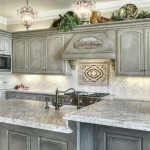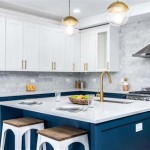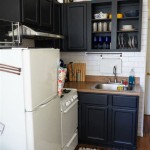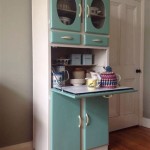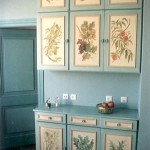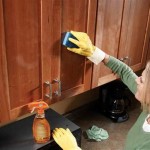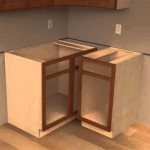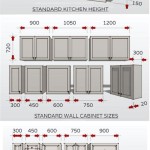Essential Kitchen Cabinet Parts List: A Comprehensive Guide
A well-functioning kitchen hinges on the quality and precise assembly of its cabinets. Whether undertaking a remodel, building from scratch, or simply repairing existing units, understanding the specific components is crucial. This article provides a detailed parts list of kitchen cabinets, specifying the function and typical material of each element. Categorization is used to enhance clarity and ease of navigation.
Cabinet Box Components
The cabinet box forms the structural foundation of each unit. It comprises several key elements, each contributing to the overall stability and load-bearing capacity.
Sides (End Panels): These are the vertical panels that form the sides of the cabinet. They are typically constructed from plywood, particleboard, or MDF (Medium-Density Fiberboard). The choice of material often depends on the desired durability and budget. Sides may be finished on one or both sides, depending on whether they will be exposed or abutted against other cabinets or walls.
Bottom Panel: This horizontal panel creates the base of the cabinet. It supports the weight of items stored within. Like the sides, it is generally made from plywood, particleboard, or MDF. The thickness of the bottom panel is critical for ensuring adequate support, particularly in base cabinets.
Top Panel: This panel forms the upper horizontal surface of the cabinet box. In wall cabinets, it acts as the primary support structure. In base cabinets, it may be present or absent, depending on the design. Similar materials as the sides and bottom are used.
Back Panel: The back panel encloses the rear of the cabinet. It adds rigidity to the structure and prevents items from falling out. While thinner materials like ¼-inch plywood or hardboard are common, some higher-end cabinets utilize thicker panels for increased stability. The back panel is often attached using staples, screws, or glue.
Face Frame (Optional): A face frame is a solid wood frame attached to the front of the cabinet box. It provides additional structural support and a surface for attaching doors and drawers. Face frames are typically made from hardwood, such as maple, oak, or cherry. Frameless cabinets, also known as European-style cabinets, do not have a face frame.
Toe Kick: This recessed area at the bottom of base cabinets allows for foot space, making it more comfortable to stand and work at the countertop. The toe kick is usually constructed from plywood or MDF and is often covered with a decorative material that matches the cabinet finish.
Corner Braces/Blocks: These small pieces, often made of plastic or wood, reinforce the corners of the cabinet box, providing extra stability and preventing racking (twisting or distortion) of the structure. They are typically attached with screws or staples.
Door and Drawer Components
Doors and drawers are the access points to the interior of the cabinet. They comprise both functional hardware and decorative panels.
Door Panel: This is the visible portion of the door. Door panels can be constructed from a variety of materials, including solid wood, wood veneer over MDF, laminate, or even glass. Door styles vary widely, from flat panels to raised panels to shaker-style doors. The selection of material and style significantly impacts the overall aesthetic of the kitchen.
Door Hinges: Hinges allow the door to swing open and closed. Various types of hinges are available, including concealed (European-style) hinges, which are hidden when the door is closed, and exposed hinges, which are visible. Hinges are typically made of metal, such as steel or brass, and are available in various finishes.
Door Pulls/Knobs: These hardware pieces provide a grip for opening and closing the door. They are available in a wide range of styles, materials, and finishes, allowing for customization to match the kitchen's décor. Common materials include metal, ceramic, and wood.
Drawer Box: The drawer box is the structural container that holds the contents of the drawer. It is typically constructed from wood, plywood, or particleboard. The quality of the drawer box construction is crucial for ensuring smooth and reliable drawer operation.
Drawer Front: This is the visible portion of the drawer. Like door panels, drawer fronts can be made from various materials and in a variety of styles. They are attached to the drawer box using screws or other fasteners.
Drawer Slides: Drawer slides allow the drawer to move in and out of the cabinet smoothly. Several types of drawer slides are available, including side-mount slides, under-mount slides, and center-mount slides. Ball-bearing slides offer superior smoothness and durability compared to friction slides. Soft-close drawer slides prevent slamming by gently closing the drawer.
Drawer Pulls/Knobs: Similar to door hardware, drawer pulls and knobs provide a grip for opening and closing the drawer. They should complement the overall style of the kitchen and be comfortable to use.
Internal Components and Hardware
The interior of a cabinet may include various specialized components designed to maximize storage space and functionality. These components often require specific hardware for installation.
Shelves: Shelves provide horizontal surfaces for storing items within the cabinet. They are typically made from plywood, particleboard, or glass. Shelves can be fixed or adjustable, depending on the design. Adjustable shelves offer greater flexibility in organizing the cabinet's contents. Shelf supports, such as clips or pegs, are needed to hold the shelves in place.
Shelf Supports: These are the small pieces of hardware that hold the shelves in place. They can be made of plastic, metal, or wood. For adjustable shelves, shelf supports are typically inserted into pre-drilled holes in the cabinet sides.
Roll-Out Trays (Pull-Out Shelves): These trays slide out from the cabinet, providing easy access to items stored in the back. They are particularly useful in base cabinets for storing pots, pans, and other heavy items. Roll-out trays require drawer slides for smooth operation.
Lazy Susans: A lazy susan is a rotating shelf unit that maximizes corner cabinet space. It allows easy access to items stored in the back of the cabinet. Lazy susans are available in various sizes and configurations.
Spice Racks: Spice racks are designed to organize and store spice jars. They can be mounted on the inside of cabinet doors or installed as pull-out units.
Wine Racks: Wine racks are designed to store wine bottles horizontally. They can be integrated into base cabinets or wall cabinets.
Cabinet Lighting: Under-cabinet lighting provides illumination for countertops and work surfaces. LED strip lights are a popular choice due to their energy efficiency and long lifespan. In-cabinet lighting can illuminate the interior of the cabinet, making it easier to find items.
Fasteners and Adhesives
The assembly of kitchen cabinets relies on a variety of fasteners and adhesives to securely join the components together. The proper selection and application of these materials are essential for ensuring the structural integrity of the cabinets.
Screws: Screws are used to fasten cabinet components together, such as sides, bottom panels, and face frames. Different types of screws are available, including wood screws, drywall screws, and self-tapping screws. The appropriate screw type depends on the materials being joined and the desired holding power.
Nails: Nails are often used for attaching back panels and other non-structural components. Brad nails and finish nails are commonly used in cabinet construction.
Staples: Staples are useful for attaching back panels and other thin materials quickly and efficiently. Pneumatic staple guns are often used in cabinet manufacturing.
Wood Glue: Wood glue is used to bond wood components together, creating a strong and durable joint. It is often used in conjunction with screws or nails for added strength. Different types of wood glue are available, including aliphatic resin glue (yellow glue) and polyurethane glue.
Construction Adhesive: Construction adhesive is a versatile adhesive that can be used to bond a variety of materials, including wood, metal, and plastic. It is often used to attach toe kicks and other decorative elements.
Caulk: Caulk is used to seal gaps and seams in the cabinet installation, preventing moisture and air from entering. It also provides a clean and finished look. Silicone caulk and acrylic caulk are commonly used in kitchen cabinet installations.
Finishing and Decorative Elements
The final stage of cabinet construction involves applying finishes and decorative elements to enhance the appearance and protect the surfaces. The choices made in this stage significantly impact the overall aesthetic and durability of the cabinets.
Paint: Paint is a common finish for kitchen cabinets. It provides a durable and washable surface that can be customized to match any color scheme. Oil-based paints and water-based paints are available, each with its own advantages and disadvantages.
Stain: Stain is used to enhance the natural grain patterns of wood. It penetrates the wood surface and adds color without completely obscuring the grain. Stain is typically followed by a clear topcoat for protection.
Varnish: Varnish is a clear topcoat that provides a durable and protective finish for painted or stained cabinets. It is available in various sheens, from matte to gloss. Varnish protects against scratches, moisture, and UV damage.
Polyurethane: Polyurethane is another type of clear topcoat that provides excellent durability and water resistance. It is often used in kitchens and bathrooms due to its ability to withstand moisture and spills.
Laminate: Laminate is a decorative surface material that is bonded to a substrate, such as particleboard or MDF. It is available in a wide range of colors and patterns, including wood grains and solid colors. Laminate is a durable and cost-effective option for kitchen cabinets.
Edge Banding: Edge banding is a thin strip of material that is applied to the edges of plywood, particleboard, or MDF to conceal the core and provide a finished look. It is available in various materials, including wood veneer, plastic, and laminate.
Decorative Hardware: Decorative hardware includes items such as knobs, pulls, and handles. These elements add personality and style to the kitchen cabinets. They are available in a wide range of materials, finishes, and designs.
Understanding each component of a kitchen cabinet is essential for successful construction, repair, or remodeling. By carefully considering the materials, functionality, and aesthetics of each part, a kitchen that is both beautiful and functional can be achieved.

Cabinet Parts And Profiles

The Abcs Of Kitchen Cabinets Part 2 Akg Design Studio

Kitchen Cabinet Parts Names Google Search Plans Cabinets Design

Kitchen Cabinet Terms Cabinets Of The Desert

Parts Of A Cabinet Doors

How To Build Wall Cabinets Houseful Of Handmade

Stratton White Shaker Kitchen Cabinets The Rta

How To Build Cabinets The Complete Guide Houseful Of Handmade

Parts Of A Cabinet Doors

Stratton White Shaker Kitchen Cabinets The Rta
Related Posts

